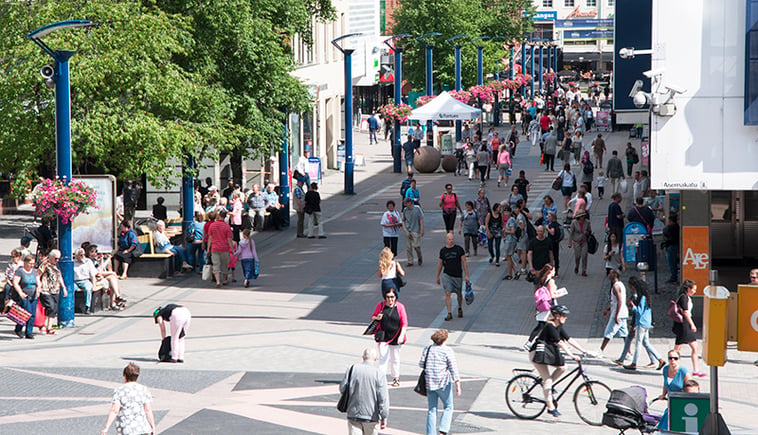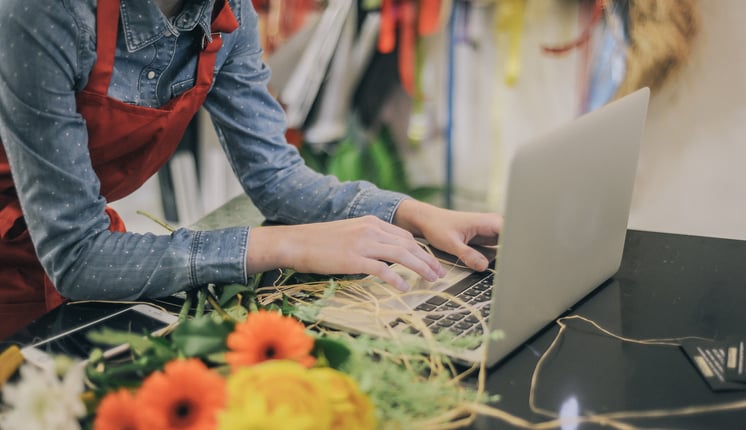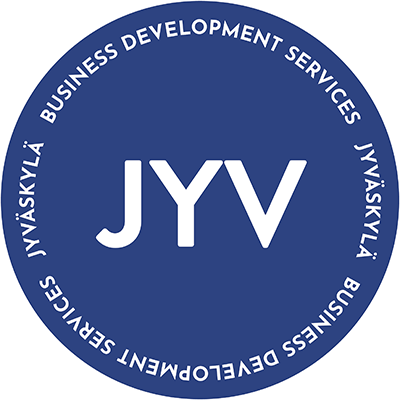Blog: How to look to the post-coronavirus era?


For the last few months, we at Business Jyväskylä have, like everybody else, been trying to take the crisis one day at a time. Let’s stay healthy, let’s try to help businesses through this sudden crisis – these have been for the most part the only objectives we’ve set. We’ve handled 300 applications for state subsidies from self-employed entrepreneurs, we’ve quickly set up a new process, and we’ve given advice to countless companies over the phone and online. Our goal has been to get the subsidies out to businesses as soon as we can. Where urban development projects are concerned, things are less urgent, and the outlook on the future murkier. But now we have to try to set our sights a little further into the future, adjusting our heading and speed to navigate these changing times.
The last period of a hundred years or so has been relatively free of major epidemics. During that time, unprecedented technological progress, urbanization, increase in global mobility and wealth creation have reshaped the fabric of our economy, our business and our enterprise. We no longer have the kind of memory capital that would allow us to easily process epidemics and the changes they bring, whether materially or mentally. If and when the coronavirus pandemic will ebb and flow over the next several years, we will need to rethink the fundamentals of our lives: safety, work, consumption and commuting, leisure and travel.
Now that our overriding concern is preventing infection and keeping our distance to other people, we need to think of safe ways to spend our time and consume services.
The world will never be the same, but what the future will be like is only beginning to take shape. A concrete example of this uncertainty is the development of the Jyväskylä city centre. The objective there has been to increase the number of residents, and through that, to boost services and leisure opportunities in the city centre. Now that our overriding concern is preventing infection and keeping our distance to other people, we need to think of safe ways to spend our time and consume services. A hairdresser’s, for instance, must rethink its interior from the point of view of preventing droplet transmission, and the same goes for restaurants and cafés, whose customers are by now used to electronic ordering and home delivery.
The difficulties businesses in the service industry have encountered have an impact on their ability to pay rent, which eats away at the value of storefront real estate and limits the potential size of the commercial centre. It’s difficult to draw customers to a concert or a brick-and-mortar store, when getting good customer service in the fitting booth carries the risk of weeks in intensive care for those most at risk from the virus. Nevertheless, the need for human contact, the need for people to meet one another and spend time with their friends, has not gone away.
History tells us that the attraction of urbanity has always been diminished after an epidemic, but it has always returned, even if often reshaped.
History tells us that the attraction of urbanity has always been diminished after an epidemic, but it has always returned, even if often reshaped. How will our era answer this dilemma of proximity and distance?
Some of the future trends can already be discerned. Working and learning from home will lead to changes in both the ways we do things and the spaces we do them in – and this includes both homes and workplaces. Online retail and its logistics have already made huge strides, and the development and adoption of autonomous vehicles will also accelerate. Some hypermarkets will turn into logistics hubs. Robotics and automated systems will gain ground beyond manufacturing, replacing some human contact in many service industries, starting with hospitals.
Besides the service sector, the influence of the coronavirus will be felt far and wide. For example, in March alone, German industries are reporting new orders have declined more than 15 per cent. The waves of change will also wash over the labour market. At the moment, employers in the private and public sectors are negotiating with their employees to reassign them where their labour is needed, and these reassignments may well turn out to be permanent. Going forward, all of us have an increasing need for new skills and new flexibility.
The companies that are able to develop themselves and readjust will find new opportunities for their business in calmer seas.
Even though the state subsidies for businesses have come under criticism, and money directed at development has been condemned as waste in some conversations, we now face a vastly different “new normal.” In a changing business environment, companies need subsidies and financing to reinvent their revenue earning models. The companies that are able to develop themselves and readjust will find new opportunities for their business in calmer seas. And the faster this happens the better for Finland, its jobs, its vitality, its public services and its welfare.
Anne Sandelin, Director of Business Development and Employment, Business Jyväskylä / City of Jyväskylä
Twitter: @AnneSandelin
LinkedIn: https://www.linkedin.com/in/anne-sandelin-7b555064/
